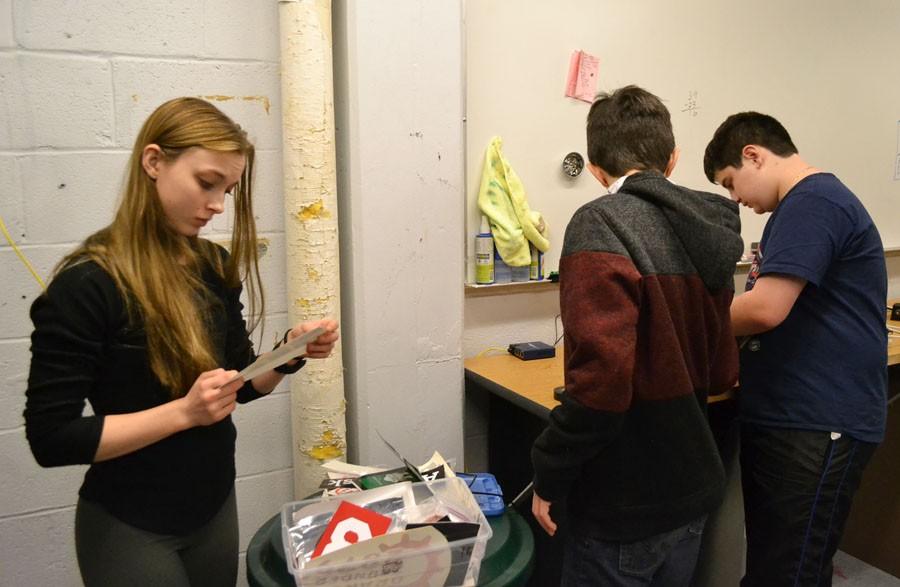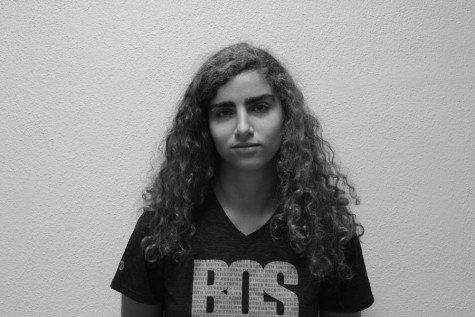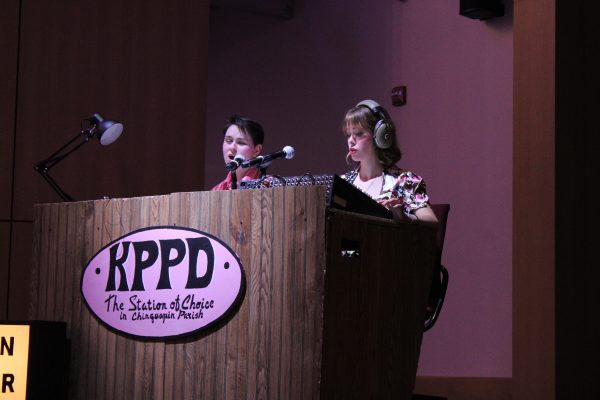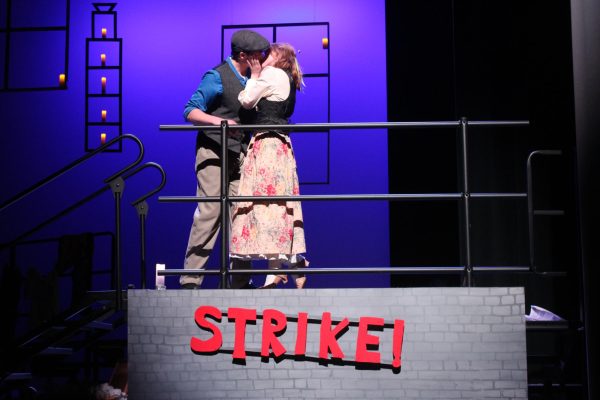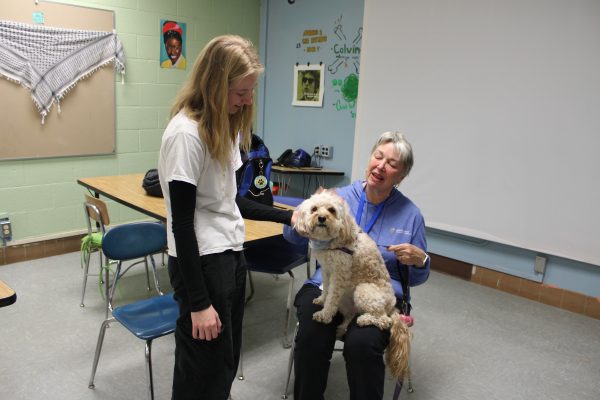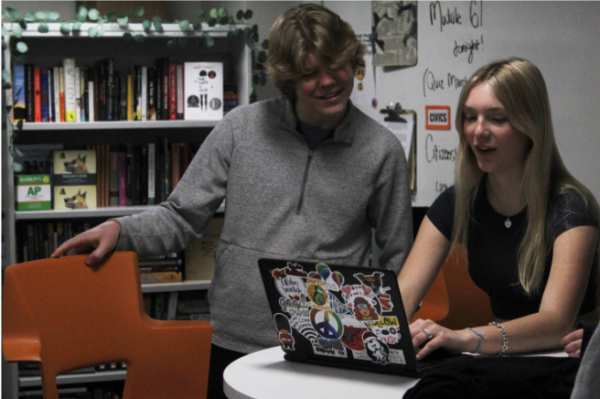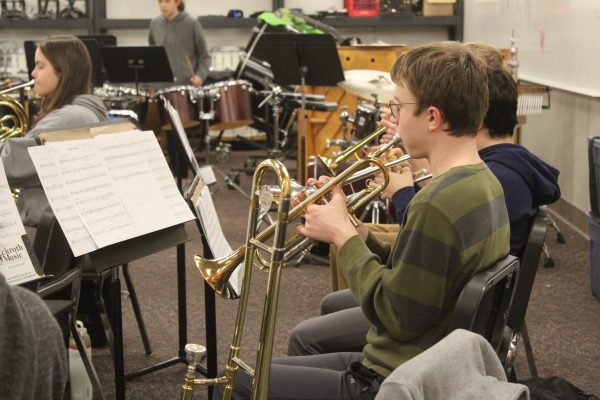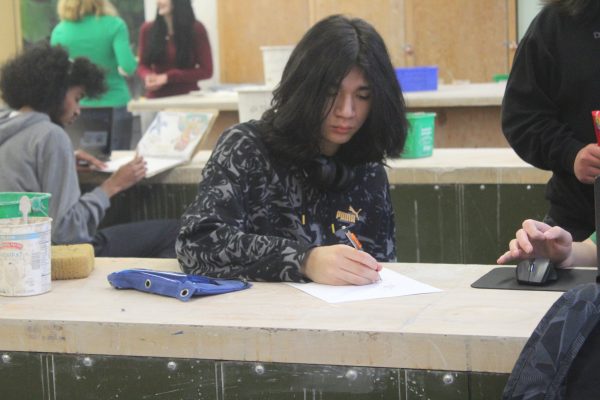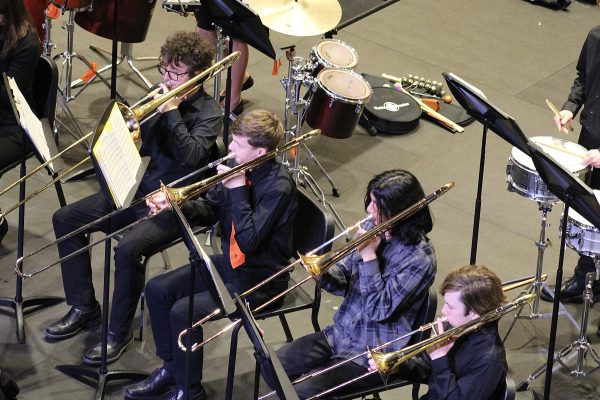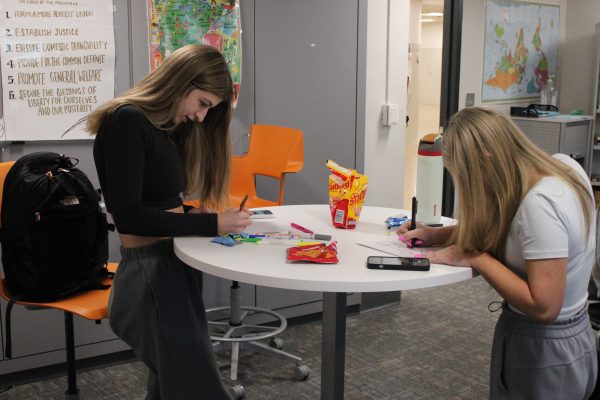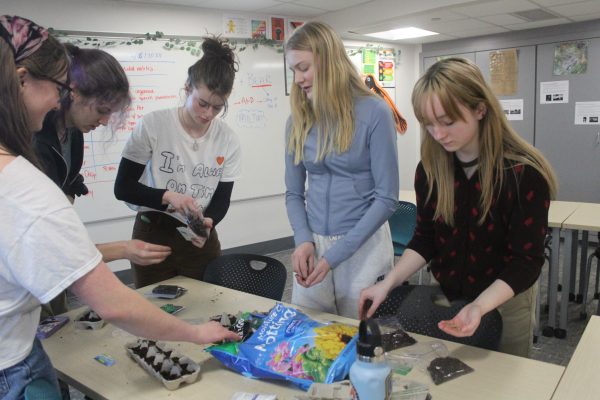Robotics season begins
Opening event starts race toward competition
Senior robotics captain Clara Slade and freshmen Alessandro Giannetti and Anthony David work on cleaning their workshop Jan. 6. The club’s kickoff took place Jan. 9, giving the members six weeks to build their robot.
January 20, 2016
After months of organizing and learning, the robotics team begins to prepare for regionals, according to senior captain Clara Slade.
Slade said the team plans to spend the next six weeks preparing its robot for competition.
“We receive a task, then we have exactly six weeks to design, order parts, build and program,” Slade said. “After the six weeks, we have to seal up the robot and we wait until competition.”
According to Slade, after the team receives the task, it must sit down and go through the rules of the competition.
“We didn’t do that last year and even during competition we weren’t 100 percent clear of all the rules and it really hurt us,” Slade said.
Slade said the team’s small size puts it at a disadvantage, because it means there are fewer people to help work on the robot.
“We are a very small team compared to others,” Slade said. “I’ve talked to other captains that think their team is small with 30-plus kids and 10-plus mentors, and we have about half that.”
According to Slade, although the team has a small number of members, this year it has a new strategy to improve.
“We are making two robots — one prototype for us to practice on and one to seal up for competition,” Slade said. “The better teams generally make two robots so that will be a huge step up for us. The experiences gained from it will hopefully make up for the lack of bodies.”
According to robotics adviser Trevor Paulson, the team budget presents a challenge because the team must acquire most of its money.
“It’s all fundraising and sponsorships,” Paulson said. “The only thing we get from the school is a coaching fee and one of the building and grounds crew delivers the robot and picks it up from the competition.”
Paulson said the budget creates problems, especially when it comes to paying for custom parts.
“(The budget) puts you at a little disadvantage because you don’t have all the same stuff to make, but at the same time, what it looks like and how it functions is more a matter of how well do you play the game,” Paulson said. “That all depends on what type of robot we build and how we practice. That’s one of the big reasons we want to build two robots.”
Despite the lack of funding, Paulson said he feels excited for the season to start.
“We did some early on training. We’re a little more prepared for after kickoff and our plan of attack — how we’re going to tackle it,” Paulson said. “So that part I’m very very excited about and happy with.”
Slade said the regional competition takes place April 6-9 at the University of Minnesota.



